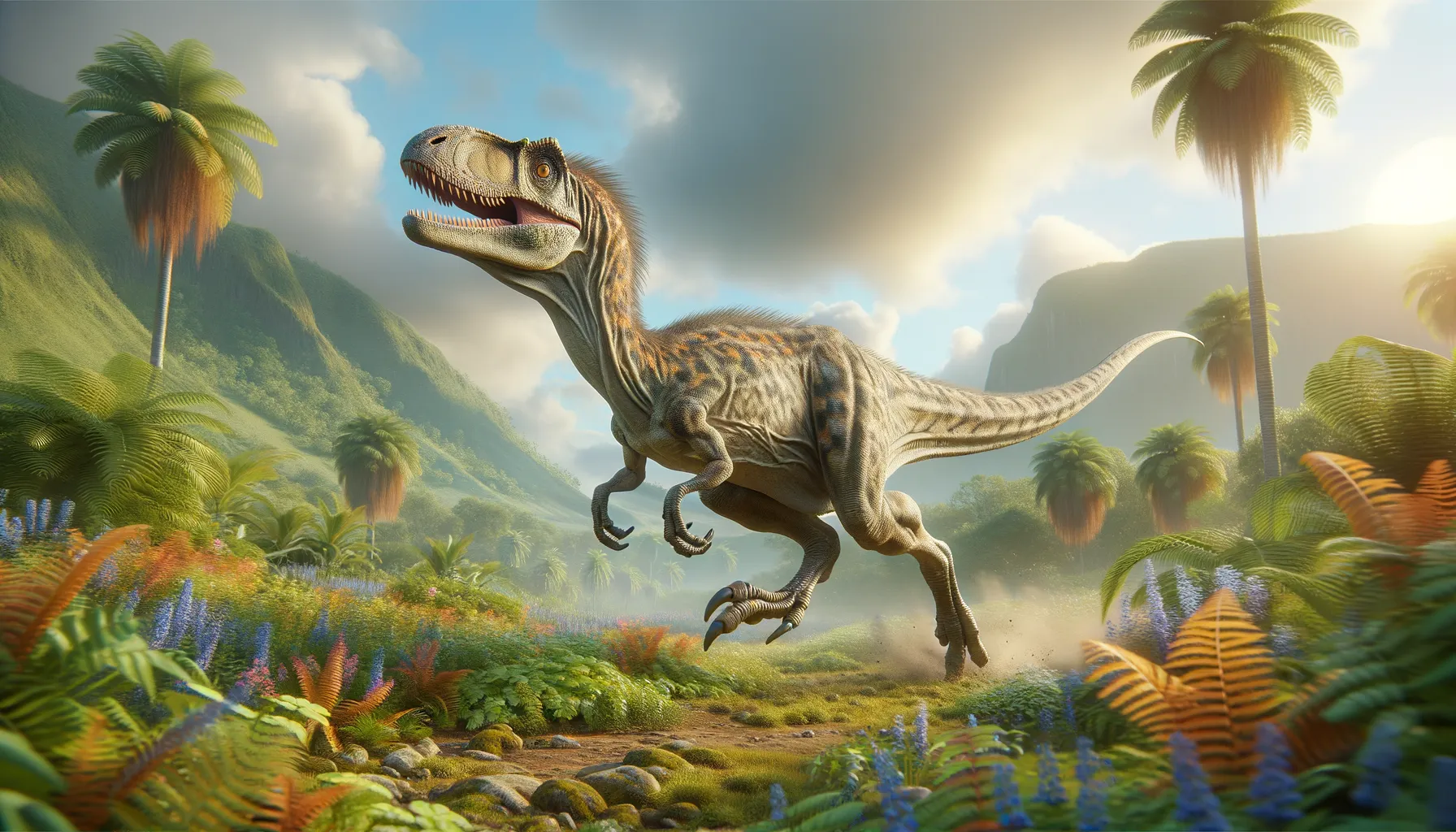
Kinnareemimus
Swift strides in the ancient Cretaceous woods!
Period
Cretaceous
Length
Approximately 2 meters in length.
Height
Roughly estimated to be about 1 meter tall.
Weight
Estimated to weigh around 20-50 kg.
Kinnareemimus was a swift and nimble theropod dinosaur that roamed parts of what is now Southeast Asia during the Cretaceous period. Its discovery added important information to our understanding of dinosaur distribution and evolution in the region. This dinosaur's anatomical features suggest a fast-paced lifestyle, likely aiding it in hunting and evading predators.
Diet
Kinnareemimus was likely an omnivore, feeding on a combination of small animals and plants. It might have preyed on insects, small vertebrates or scavenged for food if necessary.
Hunting
This dinosaur likely used its speed to chase down small prey or evade larger predators. Additional evidence suggests it might have foraged in groups to increase hunting success.
Environmental challenges
Living during the Cretaceous period, Kinnareemimus faced environmental challenges like fluctuating temperatures and habitat changes due to continental shifts. It had to adapt to different food sources and compete with other theropods and herbivores. The changing landscapes, with growing seas and developing forests, posed additional challenges to its survival and movement.
Speed
Estimated to be quite fast due to its slender build.
Lifespan
Likely comparable to other similar theropods, several decades.
First discovery
Discovered in the early 1990s in Thailand.
Fun Facts
- Kinnareemimus is named after the Kinnaree, mythical creatures in Thai folklore that are half-bird and half-human.
- This dinosaur lived approximately 125 million years ago during the Early Cretaceous period.
- Kinnareemimus was discovered in Thailand, making it one of the few dinosaurs found in Southeast Asia.
- It is believed to have been an omnivore, meaning it likely ate both plants and small animals.
- Kinnareemimus is part of the theropod group, which includes famous dinosaurs like Tyrannosaurus rex and the modern birds!
- Its long legs suggest it was a fast runner, perfect for escaping predators or catching prey.
- Despite its bird-like qualities, Kinnareemimus was not able to fly, showcasing an interesting stage in the evolution from dinosaurs to birds.
Growth and Development
Kinnareemimus developed relatively quickly to avoid predation and to begin foraging independently. Juveniles may have formed groups for protection while learning essential survival skills from adults. The growth stages of this dinosaur likely reflected changes in diet and social behavior as it matured.
Habitat
This dinosaur inhabited parts of the Cretaceous forests and plains in Southeast Asia, an area with varied plant life that offered numerous food sources. The environment was likely warm and humid, fostering diverse ecosystems. Its habitat provided both cover and open spaces for hunting and escaping threats.
Interaction with other species
Kinnareemimus shared its habitat with many other species, including larger theropods and herbivores. Its interactions included competition for resources and possibly symbiotic relationships with other species for mutual benefit. It would have had to be cautious of predatory dinosaurs in its vicinity.
Natural lifespan
It is postulated to have a lifespan similar to other theropods of its size.
Reproduction
Kinnareemimus likely laid eggs in nests, as with other theropods. Parental care might have been present, with one or both parents guarding the nest until the young could fend for themselves. Their reproductive cycles were probably seasonal, with hatchlings emerging during optimal food availability.
Social behaviour
Kinnareemimus may have exhibited some social behavior, possibly forming small groups or family units for hunting and protection. These interactions could have helped with raising young and improved survival rates. Communication through vocalizations or physical signals might have played a role in maintaining social structures.
Fossil locations
Fossils of Kinnareemimus have primarily been discovered in the Khok Kruat Formation in Thailand. This region provides valuable insights into the early Cretaceous ecosystem of Southeast Asia. Ongoing paleontological work continues to uncover more about its distribution and habitat.
